Lake Powell, Utah – by Land and Sea
Leaving Johnson Canyon in the Escalante area, we drove east on US89 towards Page, Arizona. Before getting to Page, we pulled into our planned camping area, the Lone Rock Beach “campground”. Although this Federal camp actually does have showers and toilets and even a camp host, the main camping area is down by the shore of Lake Powell, and is completely unstructured. This is called “dispersed” camping, and we love it.
All but the last 1/4 mile is a paved road. With our OldFarts discount, the cost was $7 a night, which included the use of the toilets, showers, and water and dump services.
Almost all of the visitors like to camp right at the water’s edge. While this might have been nice, the crowding and jamming and noise and dust were more than we wanted to deal with. We backed off about 150 yards and made a camp site that was functionally quite private, and certainly far more quiet than the “neighborhood” where everybody was parked 10 feet apart.
Later on in the week, our strategy became even more valuable, as newcomers thronged to the shoreline and double-parked for close water access. I’d say that maybe 2-3% of the campers were backed off like us. The rest were sardining it. To each his own.
BY LAND
Our first exploration of the Lake Powell area was to be with Ralph, trekking along several of the dusty back roads that thread across the broad plateaus. The old ’96 Ranger has lots of ground clearance, 4WD, and spare parts, tools, water, food, gas, and survival gear. We certainly don’t PLAN to be broken down out in the wilderness, but we’re damn sure not going to let it cause us a lot of grief.
We studied some maps for a while, and we got the excellent Nat Geo map for the Glen Canyon area. We picked NP230, a dirt road that goes east out of Big Water, and traverses across the western arm of Lake Powell. A side road goes all the way out to Alstrom Point, the only way to get to this vantage and see the Lake from a new perspective.
Just after the pavement ended, this sharp washout showed us just how easy it is for Mother Nature to carve up the land. The pieces, of what used to be the flat top area, were just lying around like playing cards.
A couple more miles into the back country, the scenic rewards started to unfold.
The road was still easy at that point, and some other explorers were in a low-clearance car, looking around at some of the geological curiosities.
Desert surprises — sometimes, we’d be just zipping along, enjoying a smooth sandy section of road and watching the speedometer actually move up off the “0” peg. Then, around a turn, a horrendous ditch, monstrous rock, or – – – cow.
In other places, the road just faded away in the rocks. Only occasional rock cairns (trail markers) were there to hint at the way.
Wildflowers were everywhere in tiny bits and tufts — and sometimes in profusion.
This big bluff gave the oddest impression, as if it had been flanked with dark gray plastic sheeting, and rocks sprinkled on it.
In places, the plateau would march off into the distance, the road disappearing into folds and hollows.
Elsewhere, the edge of the plateau was more obvious….
The prickly pear has the odd combination of some of the most fierce spines, and most beautiful blossoms.
At last, a tiny sliver of blue peeked out above Ralph’s dusty hood.
The stub road ran down to a rather abrupt end point.
This is scarier than it looks. The winds were gusty, and it was really easy to imagine being whiffed into the canyon below me.
But the views were spectacular.
Even with the Lake so low, the area has a profound beauty.
All the way at the end of the road, looking out south from Alstrom Point, we could see the Navajo power generating station which is just southeast of Page. It looked like we could almost walk right over to it, but it was about 10 miles away.
By that point, we had driven about 33 miles from camp, and 25 miles into the back country. Time to reverse course and head for home. Along the way, we found some less usual yellow prickly pear blossoms.
By late afternoon, all the wildflowers had opened, accenting our return across the broad plateau section….
Eventually, we were welcomed back by a charming evening-lit view of the namesake Rock at our campground.
BY SEA
Is it still “sea” when it’s fresh water? I’ll take the liberty this one time.
The second half of exploring the Lake was – – – well, exploring the actual lake. We pumped up our inflatable kayak, ‘Bote’, drove him down to the shoreline and hopped in. We left Ralph, parked on the beach, waiting like a faithful doggie for us to return.
It’s sort of a rite of passage to paddle out to the Rock before going much of anywhere, so that’s of course what we did.
Continuing across to the far shore, we were again reminded of how difficult it is to navigate from the water’s surface. It was almost impossible to detect a cut or tributary until we were right on it. Fortunately, our mapping apps helped out quite a bit. BUT — the maps showed the shoreline as if the lake was full. In fact, it was 80 feet down, and all the land edges were different than depicted.
After some more paddling and searching, we found a cove/inlet and started to explore it.
Dead end… ?
Nope, there’s a right-hand cut….
And then a left-hand zig-zag…
Every turn seemed like the end, only to reveal a new twist. The water started to get heavy with seeds and tiny wood chips. It looked like sewer sludge, but it was only floating woody material, washed down from the plateaus. It started to make a whirring, rushing sound against the surface of the kayak. Weird.
Eventually, the debris became so thick that it was quite difficult to paddle through it. Floating sticks and logs slowed our progress too, and in some places the walls of the inlet were narrower than our paddles. (Looks like poop, doesn’t it? No smell though.)
It looked and felt for all the world like we could get out and walk on it. We didn’t try that.
Finally, we reached the real end of the inlet, and could go no further. Normally, we’d get out an hike a bit, but it was impossible this time. The water, debris, and bottom were just too tricky to negotiate. So we literally backed up the kayak about 50 yards or more, until the inlet was wide enough for us to turn around.
Getting back out was the reverse process, minus the mystery. We felt enjoyment, and honestly a bit of relief, as the debris thinned out and the water cleared again. The whole gooky mess, as benign as it was, was still a little spooky for us.
Out in the clear water, we found some waterfowl plying their trade. The cove was literally teeming with fish; we heard or saw something jump literally several times a minute.
A pretty little sandy beach provided a nice picturesque lunch break.
On the return trip, Lone Rock is always an easy navigation aid to get back to the starting point.
As we got back to the beach, plenty of other folks were having kayak fun….
And there was one guy making max use of a standup paddleboard, with all three kids aboard….
We piled Bote onto Ralph and drove up to the showers way above the beach. All the sand got rinsed off, and everything dried almost instantly in the hot desert air. Rolled up, parts and pieces put away, and ready for another day. Life is good.
We’ve owned our little Bote for about six years now, with the compact package staying innocuously tucked away in one of Howie’s storage compartments. We don’t kayak often, but it’s always there for us when the notion strikes. It adds such a nice touch to our outings.
SOME MISCELLANEOUS THOUGHTS on LAKE POWELL
Lake Powell is a striking conundrum, a gorgeous combination of sere land and life-giving water. Our human intervention into Nature’s original layout has created “water wealth” for untold millions, but at a heavy cost. The vast lake has devastated hundreds of miles of local ecologies, geologies, and ancient histories. For the exquisite pleasure of a reliable water source for tens of millions, we have paid a burdensome price.
The secret shady canyons are gone. The Indian histories are submerged. The Colorado River is forever changed, along with its wildlife and geological effects. The Colorado River Delta area, some 3,000 square miles of it, has been completely eliminated and dried up.
And there is some waste as well. Today, some 380,000 acre-feet of Colorado River water are lost annually to evaporation and leakage. Since the allotted flow is about 7.5 million acre-feet, this is only about 5% of the total, which seems vaguely acceptable. Moreover, battles over water usage and allocations continue to this day, and into the infinite future.
I would hope that the collective “we” can learn something from this experience, but it’s uncertain. The current national conversations on dam-building are all about people’s needs, with scant attention to the preservation of wild (and wonderful) ecosystems. It’s a crowded planet.
STILL CURIOUS?
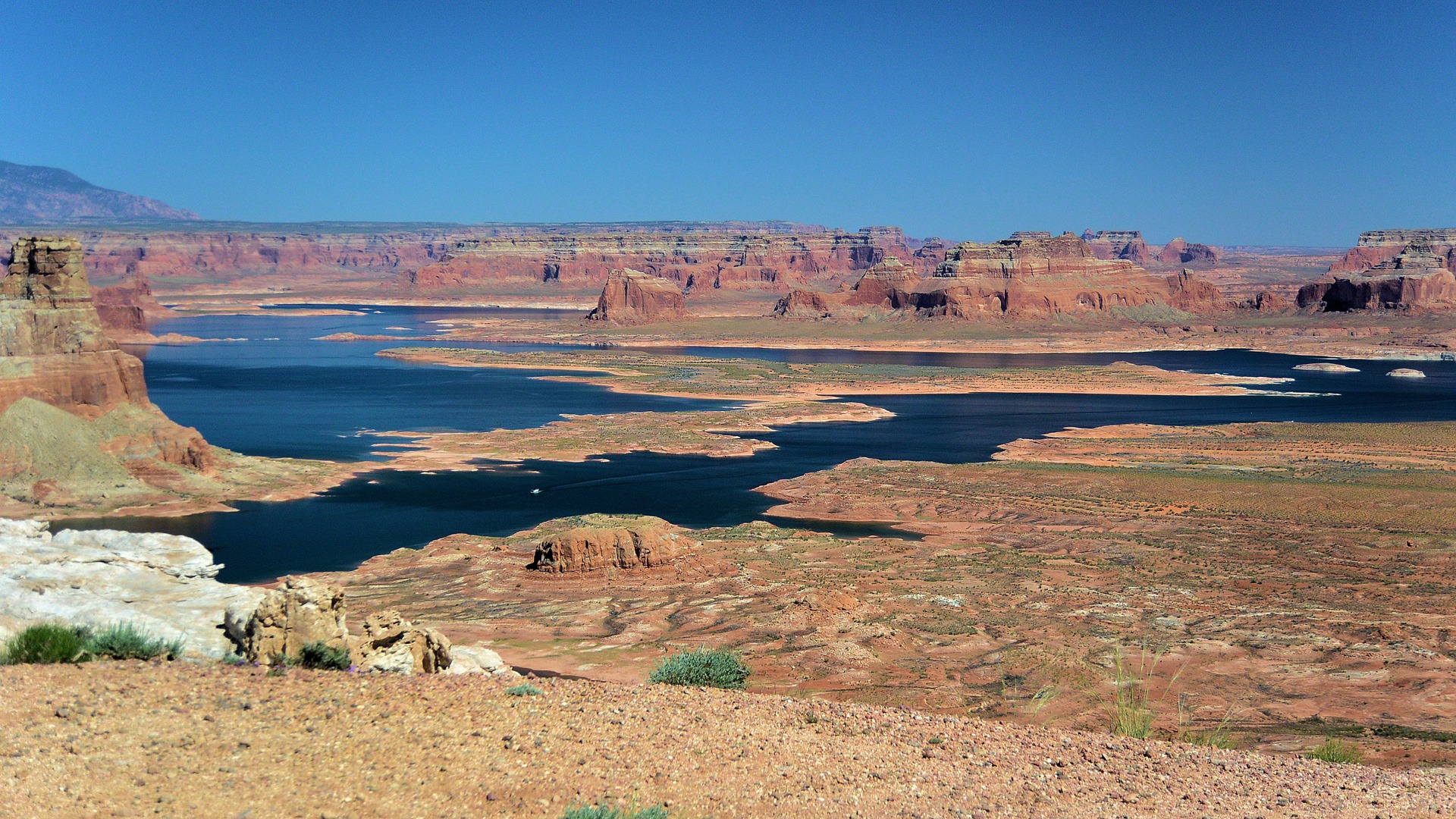
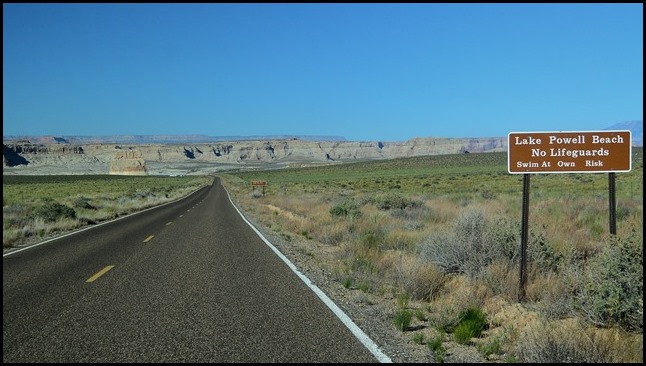
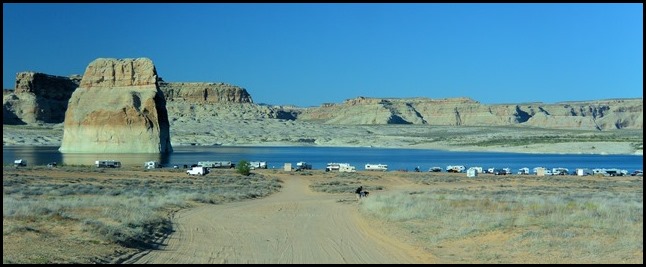
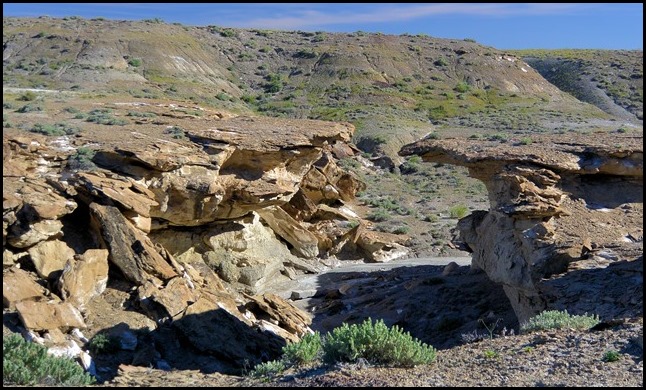
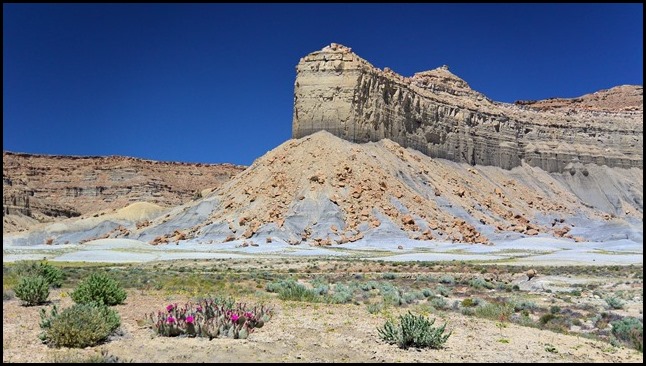
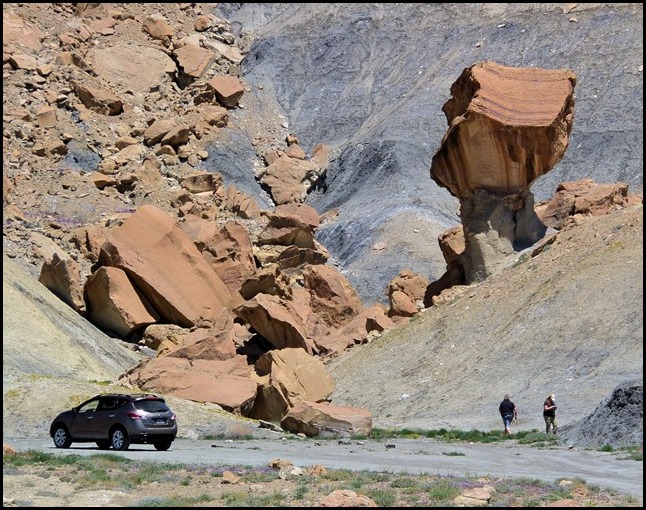
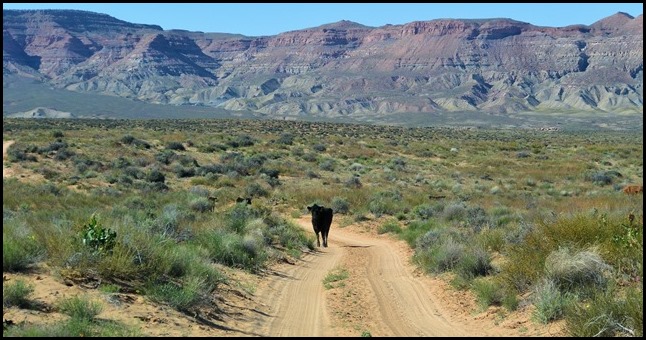
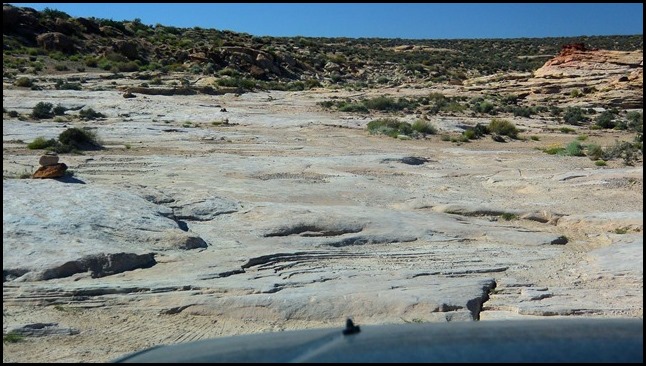
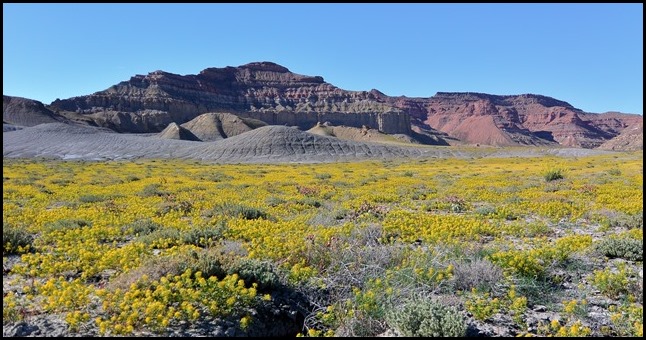
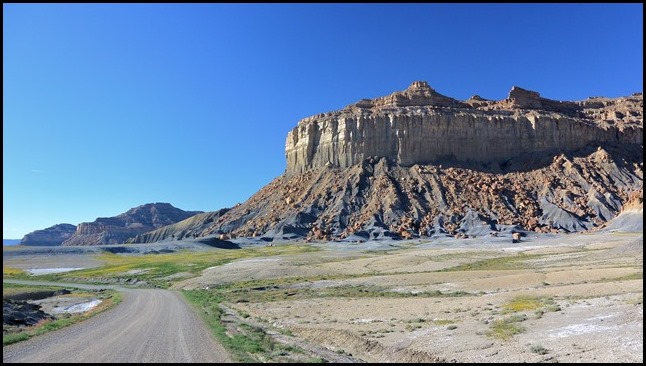
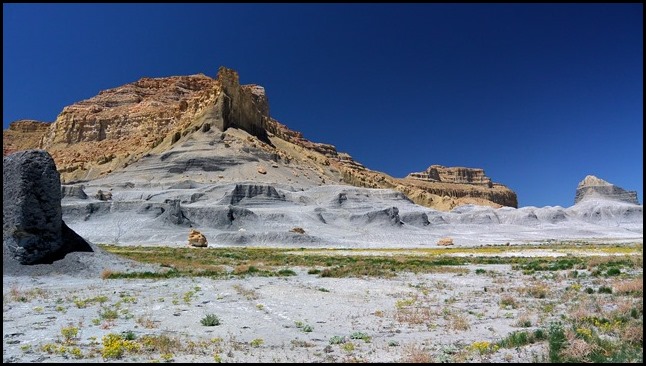
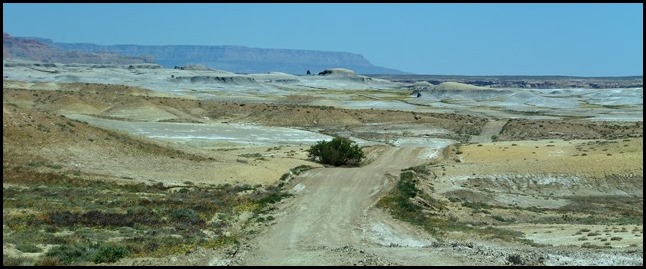
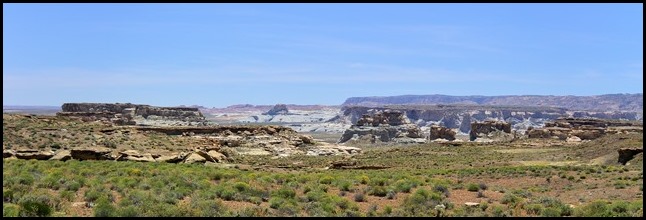
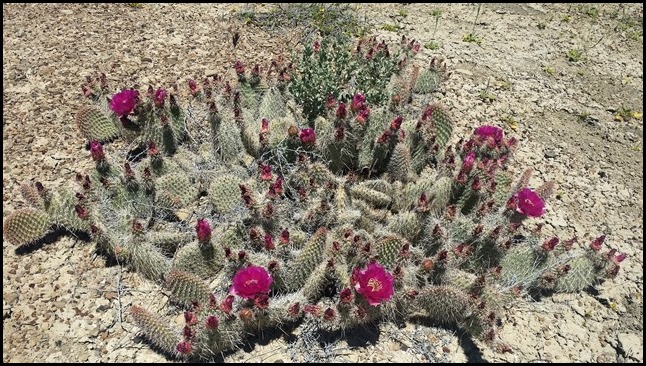
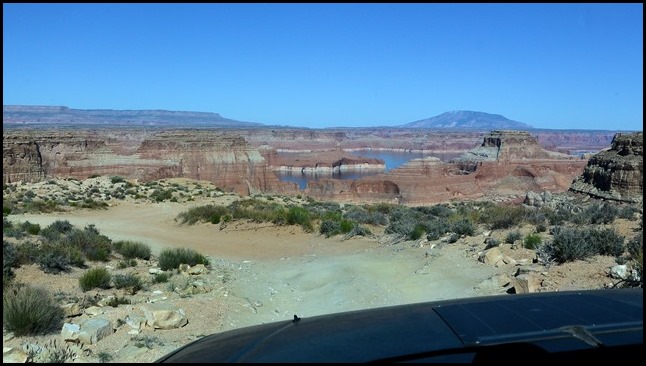
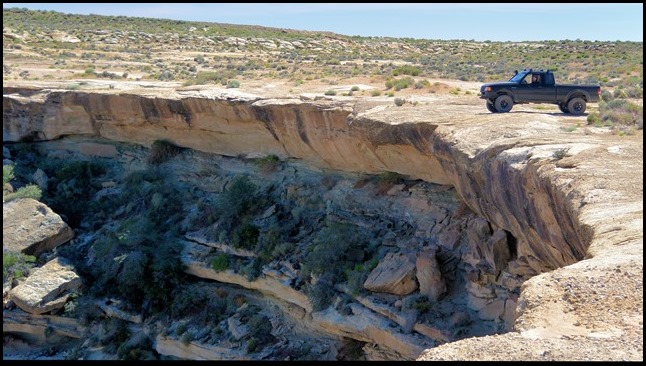
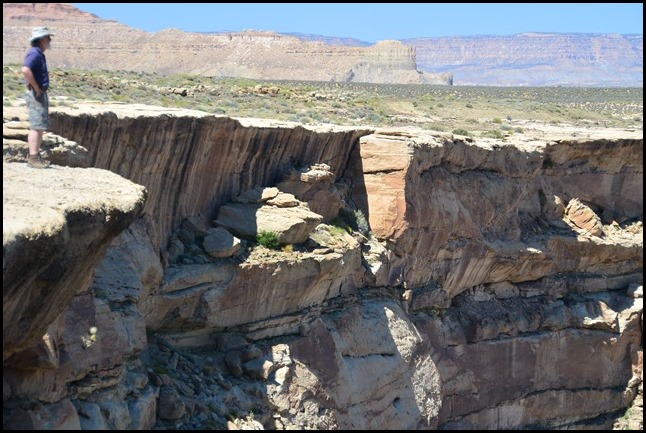
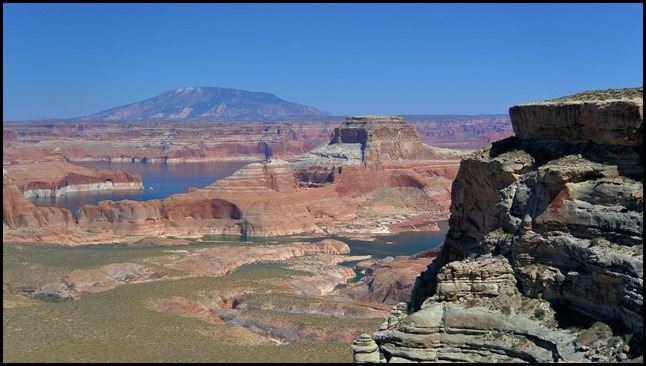
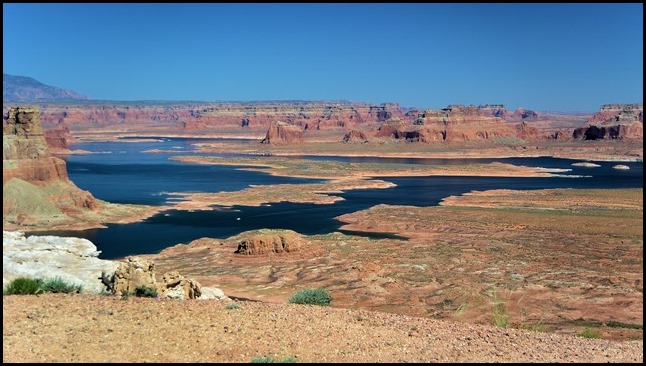
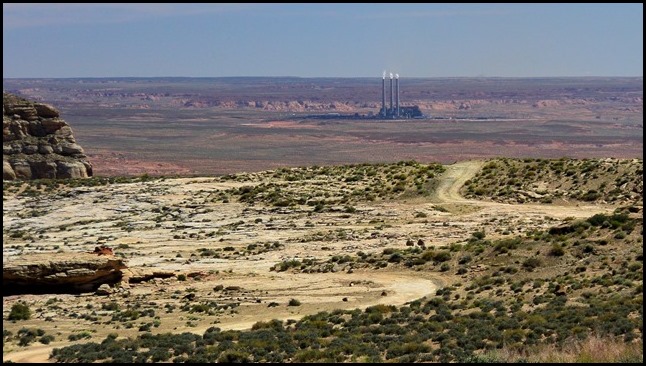
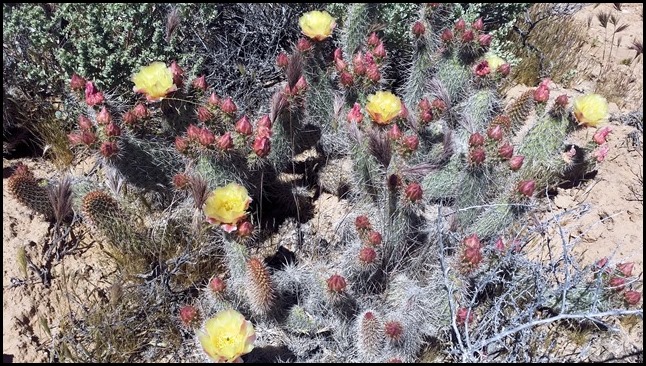
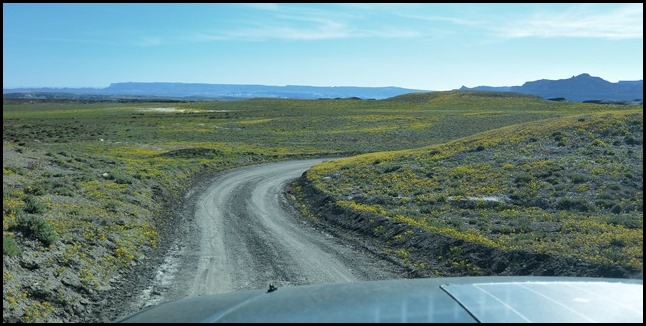
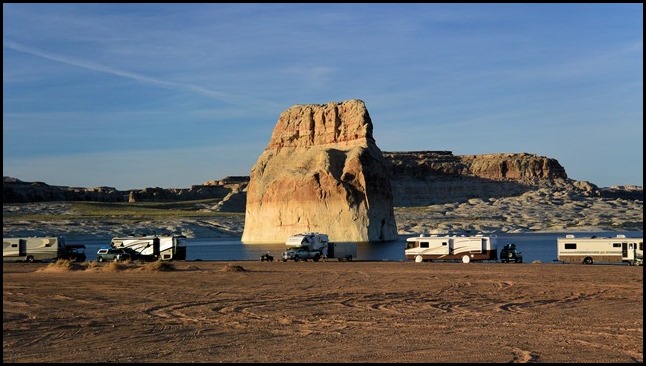
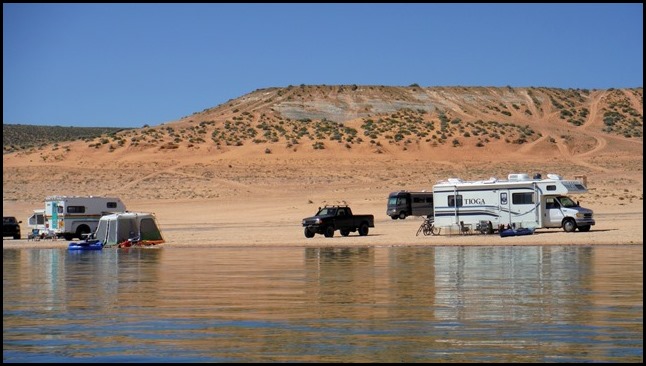
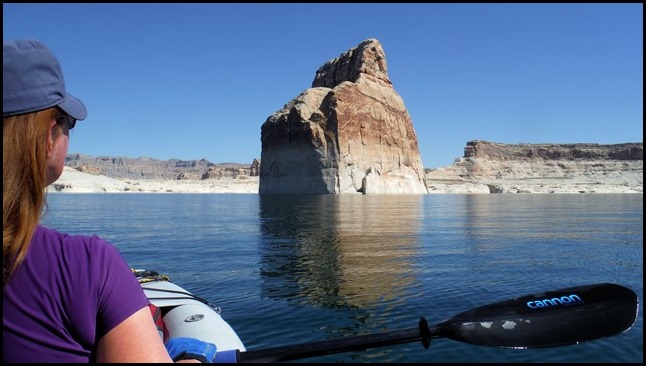
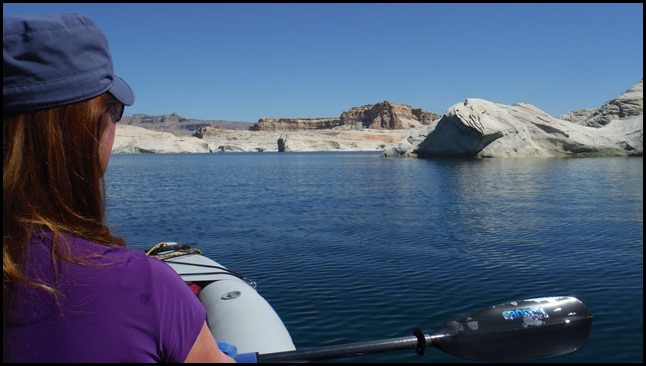
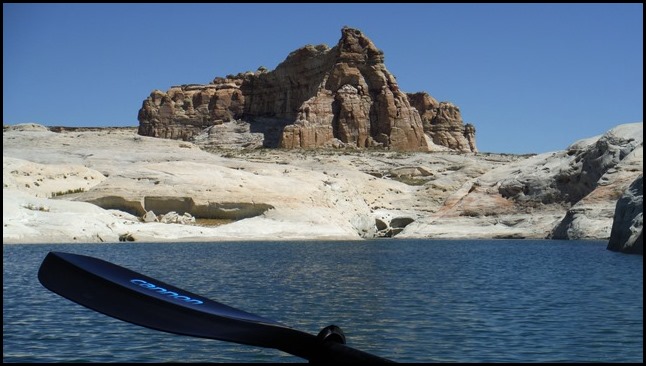
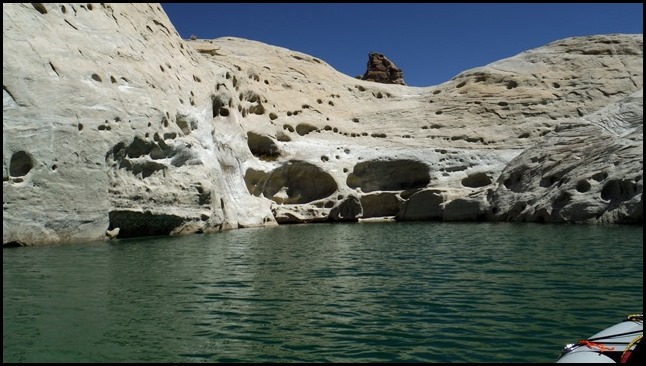
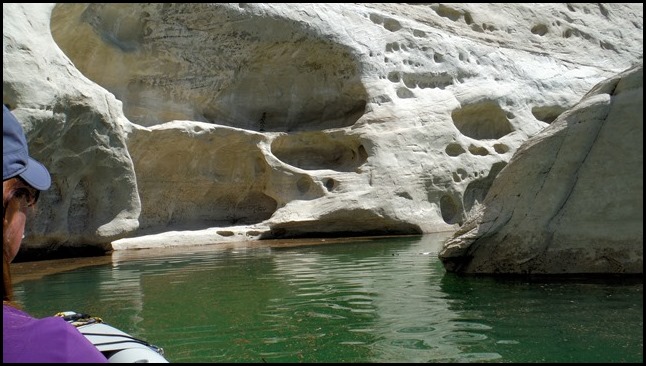
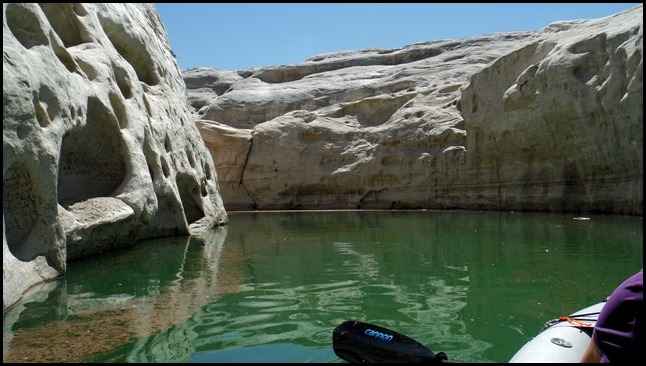
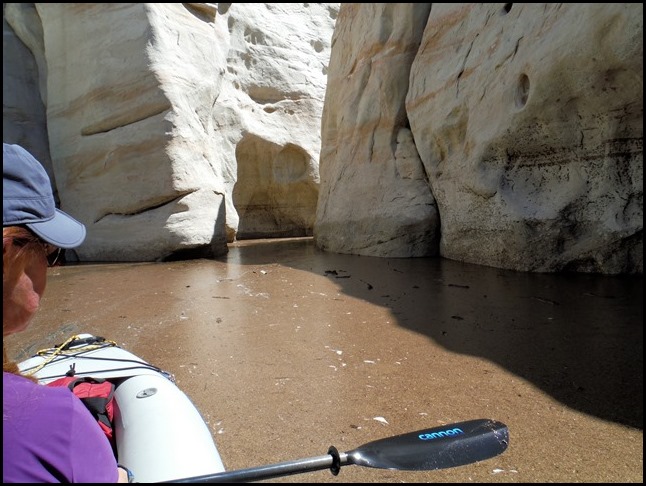
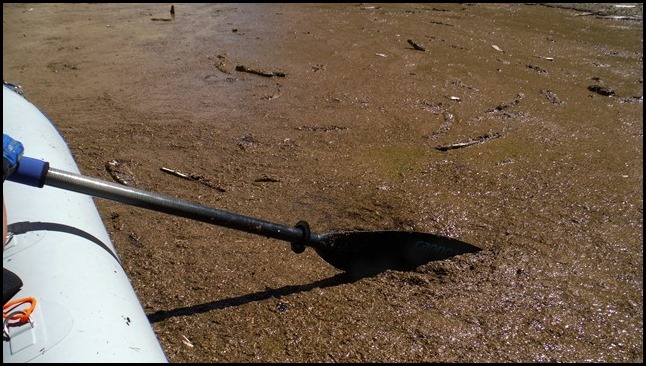
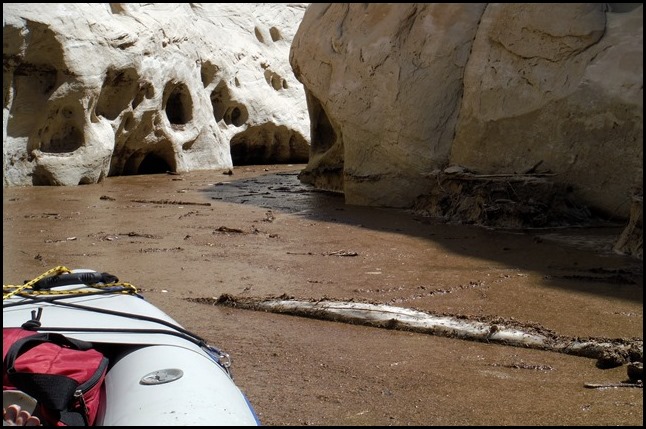
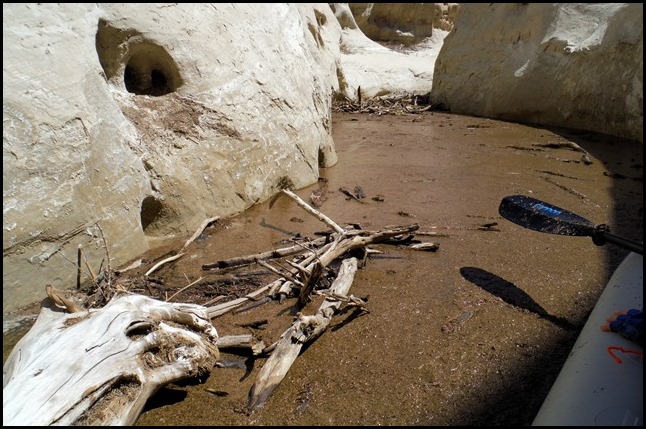
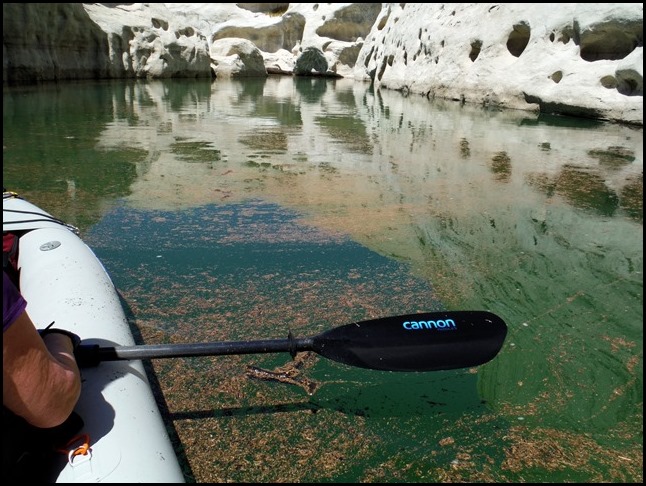
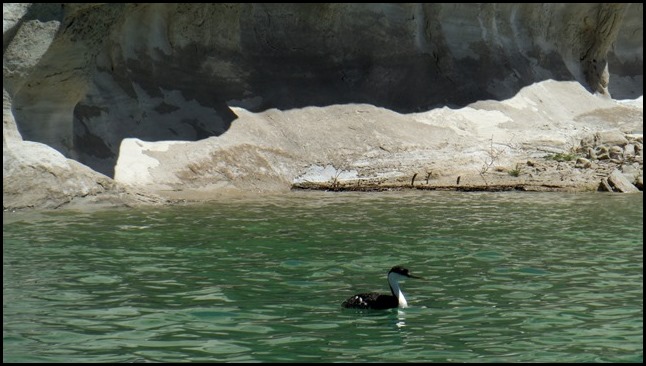
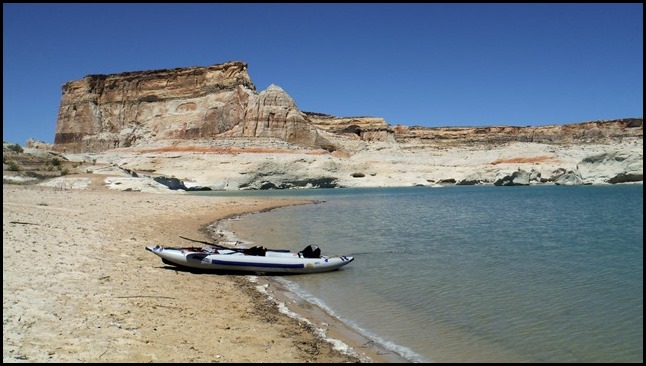
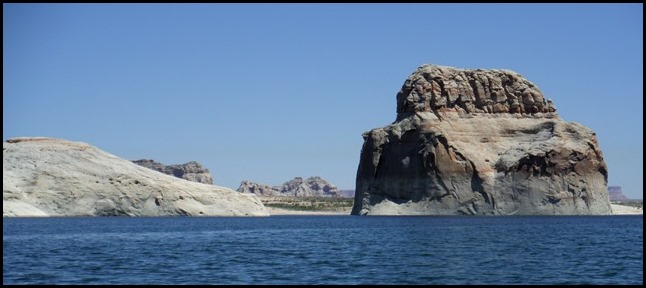
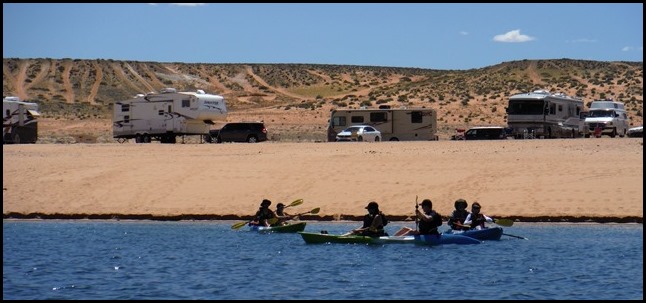
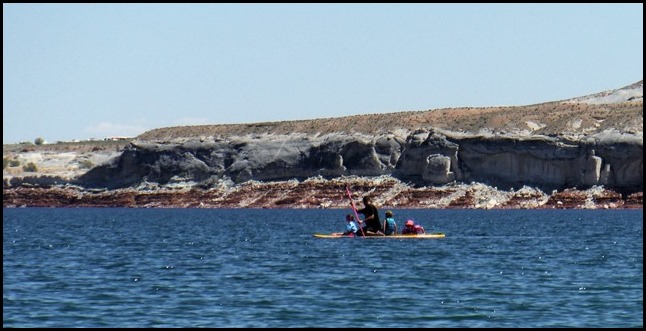
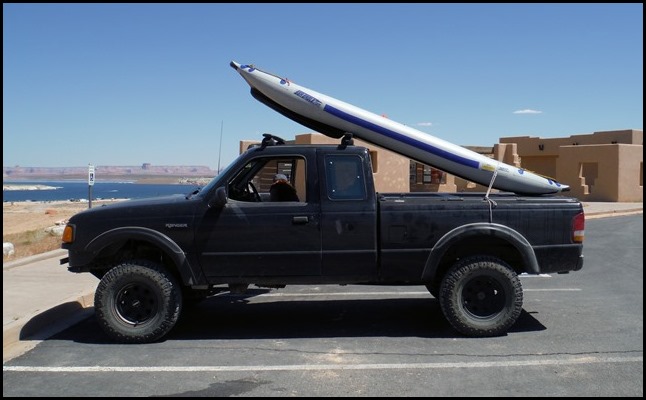
Greg:
Arrive before April and it’s free with generally only 15-20 RVs. The NP CG over in AZ is open we go there to dump and tank up. The wind can boil up something awful though.
John ‘n Mary
Maine
John ‘n Mary,
Good tip. I don’t think we’ve ever been around there that time of year.
But honestly, $7/night isn’t very steep, and even with the beach-front crowds, we had a huge patch of land all to ourselves. As far as I can tell, the only time of year that’s not so great is when it’s super hot.
Nice post! What a nice pictures too. Such a cute couple living such a great life. I wonder how is the weather, I would like this camping style very much, it is what I want but I need comfort or cold I can’t take being warm, if so I need the a/c, this is for medical reasons. I’m a new rver trying to learn. I guess we can not turn the generator on? It is noice. Can anyone tell me how is the weather?
Grissel,
The weather at Page is hot in summer and chilly in winter. Yes, A/C is noisy, not to mention having to use the generator to power it. We dislike the noise, so we travel to where the weather is not so hot. Also, we don’t travel away from coastal California much in the summer.
In general, to avoid the heat, a lot of people travel to the high mountains. At 6000-7000 feet, daytime temperatures rarely get over 90F.
Greg…great post once again. If you have the opportunity, visit the slower side of Lake Powell at Bullfrog, UT. Same beautiful views and lakeside camping but you have to earn the trip. It’s about 200 miles from a big city. We spent a week at Stanton Creek Campground just to the left when you enter the park. It’s a bumpy high clearance vehicle road but you can camp next to the lake. There are also portable toilets, but no showers. Beware if you camp right next to the lake in the spring. The lake’s level can rise a couple of inches a day. We visited two weeks before Memorial Day and pretty much had the campground and lake to ourselves. And…when in Utah, make sure you pack in sufficient quantities of your favorite adult beverages. Liquor stores are few and far between, and choice is limited.
I haven’t yet gotten to Bullfrog by land. Been there a LONG time ago on the water. I think we’ll head that way next time around.
With Howie (15,000 pounds), we’re always VERY careful where we park. Weather can make for too much excitement, so we’re pretty conservative.
G.
wow, looks great to stay right on the water!
Yep it’s always wonderful to stay right at the water’s edge. But actually here at Lone Rock, right at the water’s edge is jammed up like sardines, so we were about 200 yards back, and that was still just fine.